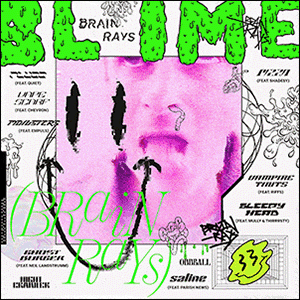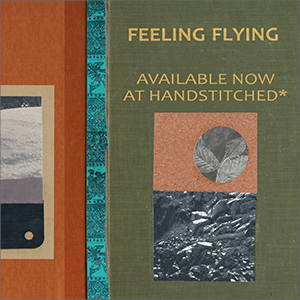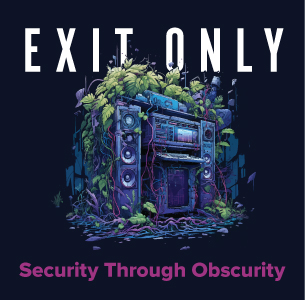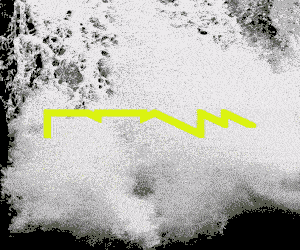Both boasting imposing resumés, bulging with felicitous collaborations, stage and screen scores, artist-in-residences and accolades, Jan Bang and Arve Henriksen are two of this generation’s many great Norwegian avant talents. As testified by their shared release party and sounds on display, these two albums are more deeply interrelated than common geographic origins can explain.
Jan Bang :: Narrative from the Subtropics (Jazzland)
Narratives from the Subtropics was completed over a remarkably productive three-year period for Bang, which included the score for a film based on Knut Hamsun’s novel Victoria, several projects by David Sylvian, and Henriksen’s Places of Worship.
Thirteen dense miniatures scatter pin-point light upon the dark sapphire firmament rippling out of Bang’s sampler and synthesizer, drawing on remarkable talents including trumpeters Henriksen and Nils Petter Molvær, guitarists Eivind Aarset and Stian Westerhus, synth programmer Erik Honoré and, in a collaboration with Russell Mills (Undark), vocalist Sidsel Endresen.
The running theme could however not be less “subtropical,” from the cover photo of the Gherkin rising from the middle of London’s business district to the northern shimmer that runs like a boreal silver thread over the album´s forty-one minutes. It is submarine and surreal, with its many references to the Titanic fates of ships and voyages, fathomless depths and the serenity of an ultimate, watery rest. Norwegian author Nils Chr. Moe-Repstad recites his “Singer’s Ashes” over the unfocused phantasm of an orchestra before Endresen provides hints of song to the accompaniment of an only slightly more corporeal jazz quartet. On “Singer´s Childhood,” a traditional Estonian song, Bang and Henriksen (seeming to channel saxophonist Jan Garbarek’s Officium) are joined by Armenian pianist and composer Tigran Hamasyan and guitarist Robert Jürjendal and singer Tuule Kann, both from Tallinn, for a moment of utter clarity.
Bang maintains a slow, spectral pace. It all seems to be coming as the anesthesia starts taking effect, take Molvær’s satiny trumpet on “Funeral Voyage. “Melee of Suitcases” was co-written with composer Dai Fujikara, who along with Endersen’s gutteral stutter-song (a tour de force or one of the grossest things you’ve ever heard, depending), contributes the only hard edges on Narrative from the Subtropics on prepared piano. Fujikara’s cello is later sampled on “Flooded Corridors,” just before Bang and Henriksen’s zen-like “Sinking Ship” and after the REM-sleep flutter of “Lifeboat,” the manipulated piano closer.
Bang’s music is slow entertainment in a rapid-click instant-gratification world, takes time to ingest but all the more savory for it.
Arve Henriksen :: Places of Worship (Rune Grammofon)
Arve Henriksen always sought to coax something new, unheard and warm out of his trumpet, and his early association with Molvær, who piqued his interest in the meditative qualities of Japanese instruments, helped midwife his characteristic tone and mood into being. At an early stage, he, like Molvær, began incorporating electronics and treatments. He co-founded Norwegian superfree supergroup Supersilent in 1997, and has played alongside a huge roster of mind-tickling Norwegian and international originals, including Terje Rypdal, Skúli Sverrisson, percussionist Marilyn Mazur, cellist Ernst Reiseger and Jon Hassell. If Bang’s album is exquisite-corpse surrealism, a string of weird and wonderful uncultured pearls, Henriksen inhabits the same flowing, ambient fourth world that Hassell discovered and planted his flag on—once an acolyte, now a worthy.
For his fifth solo ablum, Henriksen visits ruined and silenced holy places, still quaking in fear and awe, to seek clarity on the gods´ desires. If the priests have failed, the prophet continues to chase the idea. Over almost exactly the same length as Bang´s album, his Places of Worship are insinuated with feathered touches of the souk, the Sahara, the Alhambra, as naturally as one ray of white light breaking through a prism. Caught comfortably between urban spaces and wilderness spaciousness, Places of Worship reflects flux and permanence, liberty and rigour. Bang and Honoré accompany him throughout, their subtle but infinitely varied electronic shadings lending depth and relief to Henriksen’s often emotionally strangled trumpet, seeking the One in the multiple, constantly reorienting itself toward countless Jerusalems.


















